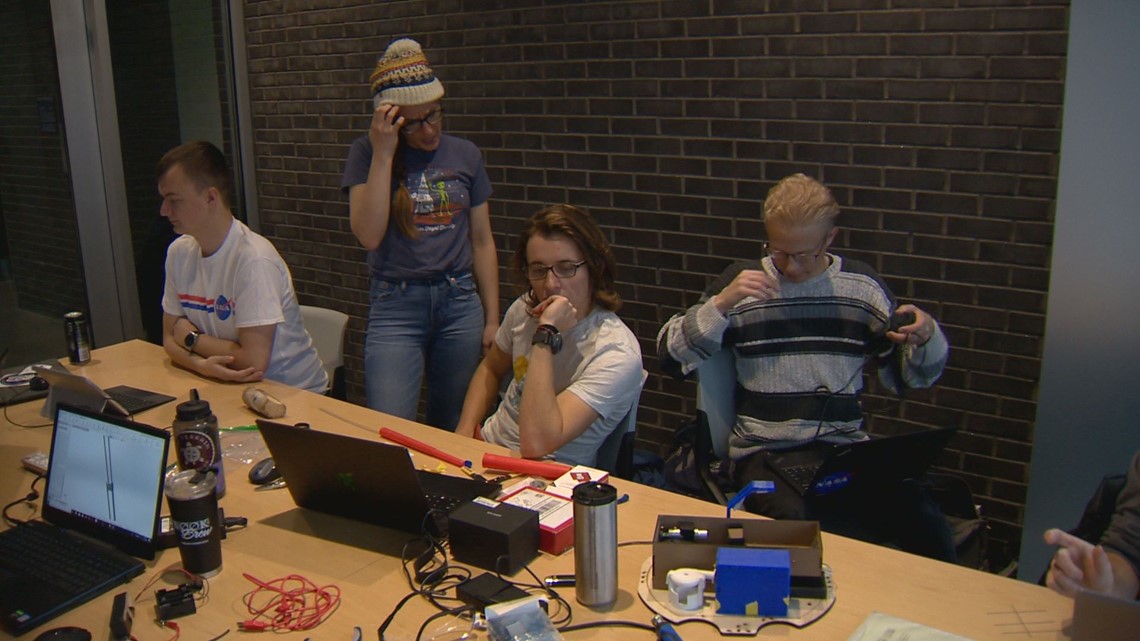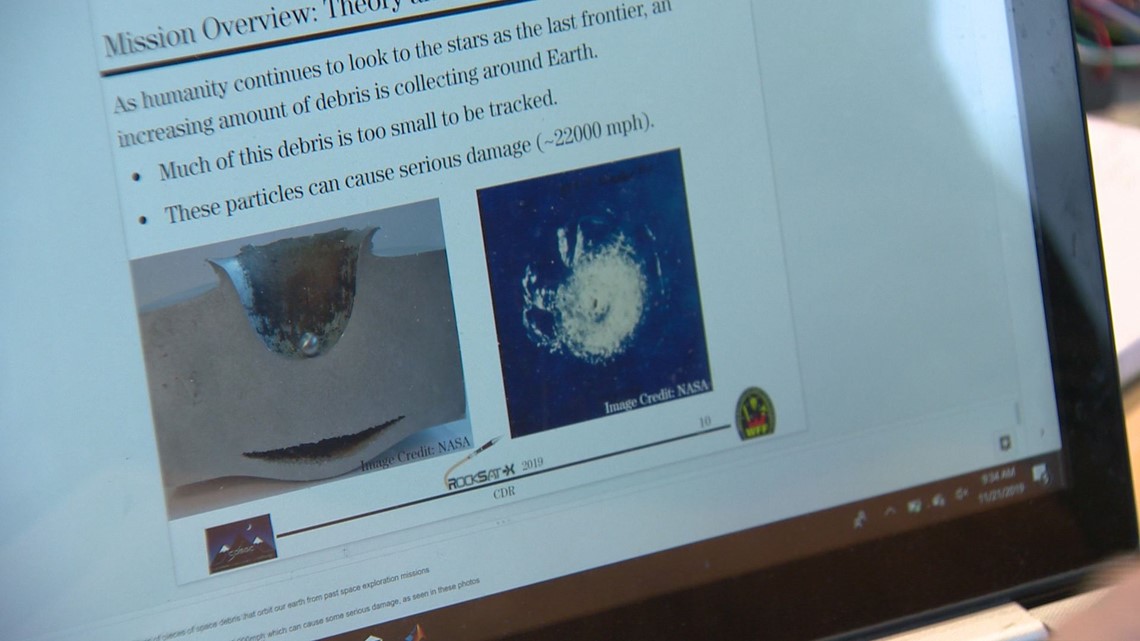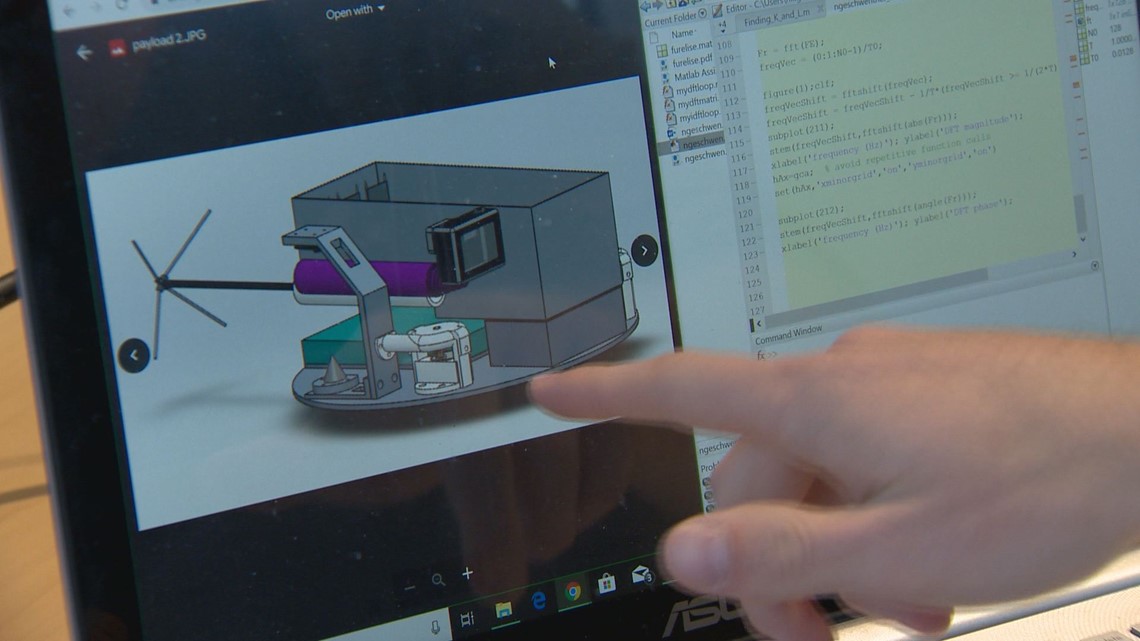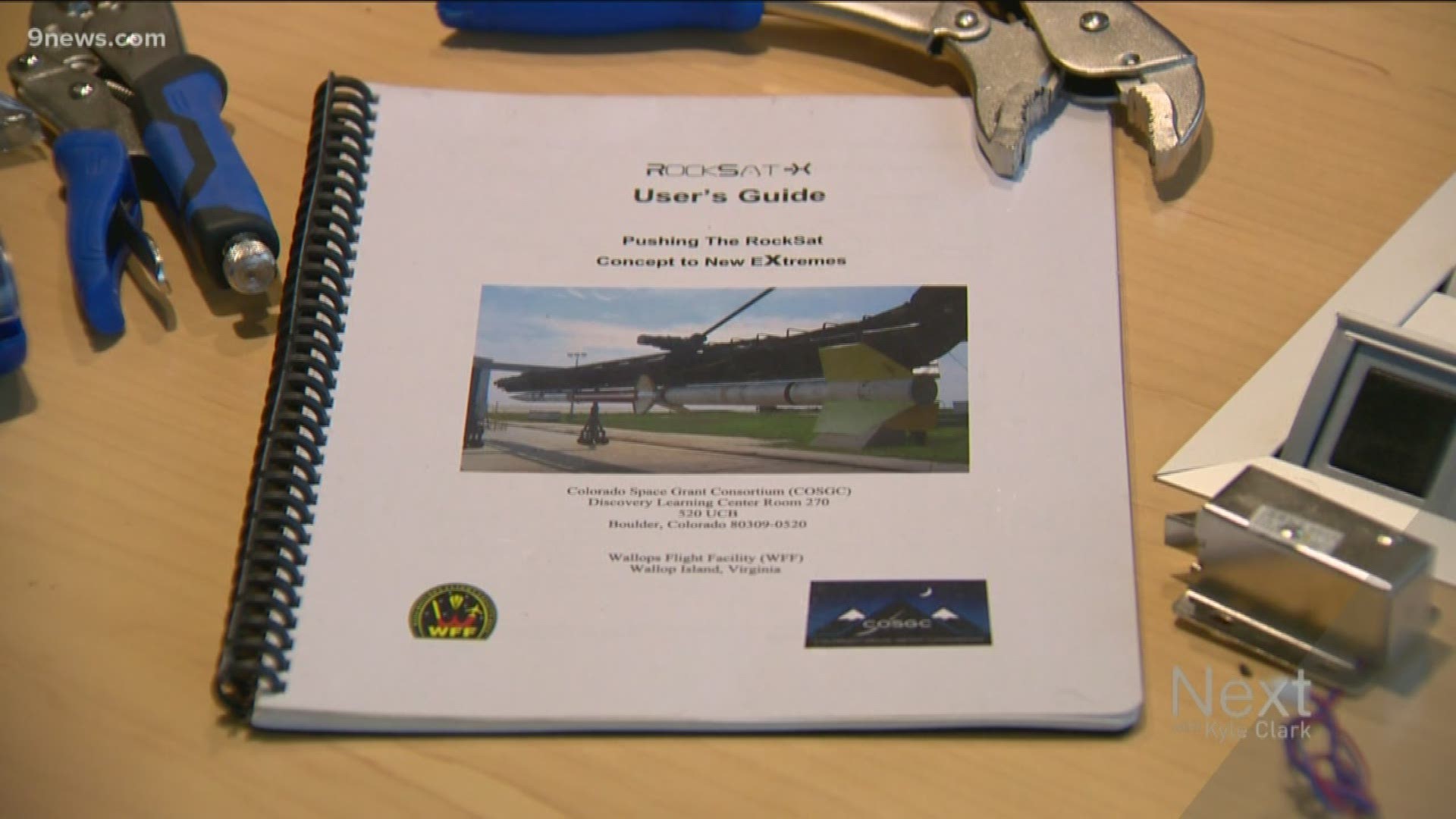GOLDEN, Colo. — A group of Colorado School of Mines students are spending their senior year thinking about how to clean up trash — in space.
“These smaller pieces of debris we can’t see, they can do some really big damage because of the speeds they’re traveling,” said senior Bri Treffner, who is an engineering major.
Treffner is the project leader for the school’s RockSat-X team — a team of students interested in the aerospace industry.
The RockSat-X program is an extracurricular program committed to designing and launching meaningful scientific experiments in space.
RELATED: Space junk causing dangerous clutter
Guided by NASA and the Colorado Space Grant Consortium, the program gives students low-cost access to space, culminating with a payload launch on a sub-orbital rocket to an altitude of over 90 miles.
The Mines team is sending up three experimental debris removing methods:
- Electrostatic deflection
- Magnetic deflection
- Laser momentum transfer
This is the first year for the program at the school.


“It’s awesome how many people are interested in space,” Treffner said. “We decided that it would be a great opportunity to be able to bring it to the Mines campus because we’ve never done this before.”
According to the school, space debris like dead satellites, rocket shards and other “space junk” orbiting the earth could pose a serious challenge for future space exploration.
The Mines RockSat-X team is designing and building the three pilot methods for removing the smallest pieces of debris, like metal and paint fragments, less than 1 cm in size.


“Material the size of a BB will cause damage the size of a bowl, essentially because it’s traveling so fast,” said senior Nik Geschwentner, a physics and engineering major. “Material traveling at 22,000 mils an hour can still cause a lot of damage.”
In 1983, a dented windshield on the space shuttle Challenger was caused by flecks of paint.
It was one of the first incidents of particles of space debris causing damage. The goal of the three experiments is to remove that debris by deflecting particulates.
“We’re looking for ways to kill the momentum of the particles so that they’ll fall into earth’s atmosphere and essentially just burn up,” Geschwentner said.
The team is also building a “space selfie stick” — a 5-foot boom that will deploy to take pictures of their experiments at work in space and send them to a ground station at NASA Wallops Flight Facility in Virginia.


“It’s going to have a camera, and it’s going to take a picture of the rocket and earth behind it,” Treffner said.
According to Treffner, they will have their experiments ready to launch in August 2020.
”It’s really great we have all these new countries entering into the space industry…it’s a really exciting time in space,” Treffner said. “But also (we) need to make sure that we are leaving the skies clear for future launches.
For more information, click here.
SUGGESTED VIDEOS | Feature stories

